Mango is an evergreen tree with beautiful glossy foliage, which changes color as it grows. Young specimens are distinguished by reddish leaves, and adults have a dark green crown. With regular care and pruning, this plant maintains its neat shape and compactness.
There are many varieties of this species, but during the flowering period they are all characterized by high aesthetic appeal. To achieve this result, you need to make some effort. From the seed of ripe mangoes purchased at the supermarket, it is quite possible to grow an exotic plant that will decorate the home interior.
Content
Preparation and cultivation of mangoes from the bone at home
When grown from mango seeds, healthy specimens are obtained that are resistant to adverse effects of various nature. To start cultivating this plant at home, the beginning of summer is best.
 You may be interested in:
You may be interested in:Prepare the bone
To germinate a mango seed, you need to process it accordingly. It is important to adhere to this sequence:
- first, the pulp should be carefully cut from the ripe fruit, rinse the bone under running water, carefully removing the remains of plant flesh;
- the next step is to split it. Inside the seed there are several embryos;
- from them to choose the most even, light and treat them with fungicides to prevent fungal diseases;
- after this, the seed can be planted in the ground.
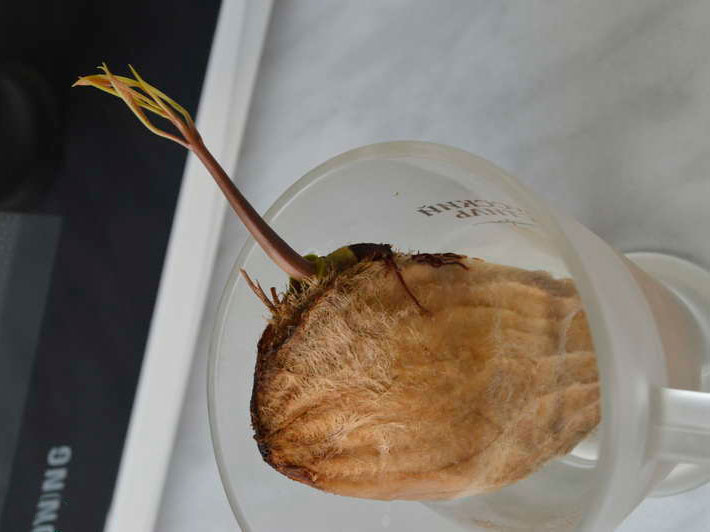
If the bone shell is too strong, then you can not try to crack it by any means. Excessive mechanical stress can damage the internal nuclei. It is recommended to put the seed in a transparent glass with water and place it on a sunny windowsill for 2-3 weeks. During this period, water is changed every two days.
Choose soil and pot
For the cultivation of this plant, neutral universal loose soil with good drainage will be most favorable. To form a drainage layer, granules of expanded clay or crushed stone should be laid at the bottom of the pot. This will prevent rotting of the roots and death of the tree due to stagnation of water.
Mango Bone Landing Algorithm
It is recommended to extract seeds from the seed immediately before planting in the prepared substrate. You can plant a bone by placing it sideways or horizontally.The first option is recommended to be used when it is difficult to determine the upper and lower parts. The second method is suitable in the presence of a small sprout.
Landing must be carried out strictly adhering to a certain sequential scheme:
- In a prepared pot with soil and drainage, dig a hole up to 3 cm deep. Pour plenty of water into the indentation and place the seed inside, with the sharp end pointing down. In this case, it is important to ensure that its fourth part rises above the ground. The correct location of the bone will ensure that the spine is at the bottom. After that, water the seedlings abundantly.
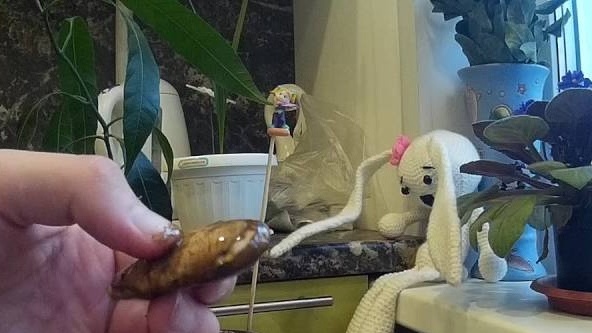
Landing bone - At the second stage, it is recommended to make a mini-greenhouse by placing the top with the lid of a cropped plastic bottle on the pot. This design should be placed on a warm, well-lit window sill. Be sure to periodically unscrew the cover, providing air. During this period, care should be taken to maintain moderate humidity, a temperature of 22-25 degrees Celsius.
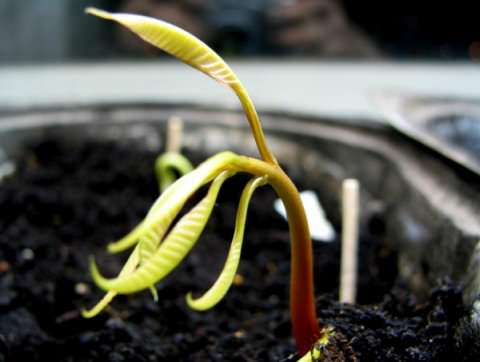
Mango sprout - After about a month, the first shoots should appear, which need sunlight, heat and moisture. The first green leaves should be regularly sprayed with warm, standing water. When the mango begins to grow, you should remove the plastic cover. After the seedling has grown stronger and grows, it needs to be transplanted into a more spacious pot with prepared substance.
Features of growing and caring for young mangoes
If the mango was originally placed in a small container, then you should not rush to transplant it. It is important to wait until the plant grows stronger and grows.
A plant can lose foliage and even die. This plant species tolerates pruning and quickly restores crown volume. These methods make it possible to control the shape and size of a home decorative tree. The homeland of mangoes is the tropics, therefore, for its healthy growth, development, it is required to create the appropriate conditions during cultivation.
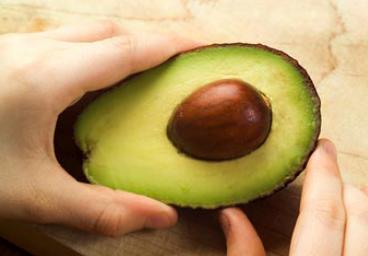 You may be interested in:
You may be interested in:Watering and spraying
The young tree needs regular plentiful watering. In addition, the plant is favorably influenced by high air humidity. On the other hand, too often spraying foliage is extremely undesirable, as this can provoke the development of fungal diseases, the appearance of mold.
In no case should stagnation of water in the ground be allowed. The soil should not become waterlogged due to heavy irrigation. To solve this problem, it is necessary to initially provide good drainage, choose a light, loose substance.
Temperature and light
This thermophilic tropical plant does not tolerate low temperatures, drafts. If the air does not warm above 5 degrees Celsius, then the mango tree may simply die. The optimal temperature conditions for mangoes are 25-29 degrees above zero. This species loves light, so for a flower pot it is better to choose the most lit place.
In the winter season, it is recommended to equip additional artificial lighting using fluorescent lamps. This is because the plant needs 11 hours of daylight. In summer, it is recommended that the plant be placed on a balcony, loggia or terrace, providing protection from drafts.
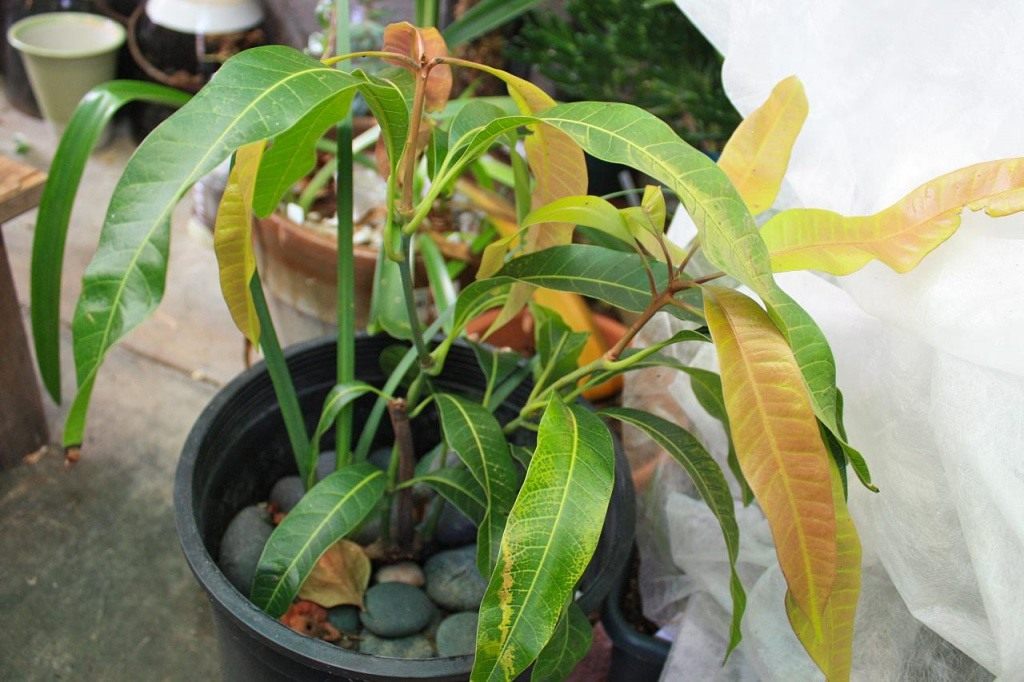
Quenching and feeding
At the greenhouse stage of development of the plant from the stone, after the appearance of the first petals, it is necessary to gradually harden it, acclimatize to room conditions. This process should be gradual. Each subsequent day, it is recommended to increase the opening time of the greenhouse by half an hour.
It is recommended to leave the film at night. After a month, you can already fully open the plant. During this period, you need to place it on a sunny windowsill or a warm balcony. Direct sunlight does not threaten mangoes at this stage.
The plant, which is grown from seed, must be fed with nitrogen mixtures, biological humus. Fertilizers for palm trees, citrus fruits, persimmons are also good. For this plant species, it is especially important to top dress in the spring and summer, when its active growth occurs. Keep in mind that the mango tree is most in need of nitrogen.
Pest and Disease Control
If you do not pay enough attention to the plant, do not adhere to the rules of care, then the plant may become ill. Among the most common pathologies, the following diseases can be distinguished:
- Powdery mildew that appears on the leaves due to too humid air, sudden changes in temperature.
- Anthracnose is a type of fungus introduced through the ground or damaged leaves.
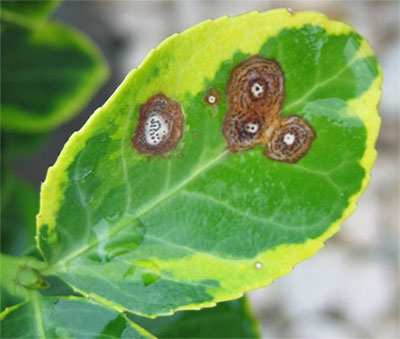
Anthracnose - Bacteriosis caused by microorganisms that appear on the plant through wounds on the leaves due to stagnation of water or excess fertilizer.
Powdery mildew in the form of white plaque on leaflets is treated with fungicide solutions. Fundazole or Topaz is applied to the leaves up to 4 times. During the treatment, you need to take weekly breaks.
Yellowish or brown spots of anthracnose fungus on the foliage are treated by washing in warm water, transplanting into another soil, removing the affected leaves. For the treatment of plants using Fitosporin.
Bacteriosis is treated with a solution of copper sulfate. In addition, you need to cut off rotten damaged parts, transplant mangoes into a clean substrate.
Among the pests, the most dangerous for the mango tree are thrips and spider mites. To combat them, the following methods are used:
- leaf and stem treatment with Kleschevit, Fitoverm, Akarin;
- removal of affected parts of the tree;
- washing with an alcohol solution with soap of the whole plant and adjacent surfaces.
How to achieve the fruiting of mangoes at home
When growing a decorative mango tree at home, flowering and fruiting does not occur by itself. Providing favorable conditions, you can get a decorative tropical plant, characterized by high aesthetic appeal. Adapted to home conditions are a dwarf variety. From such instances it is much easier to get a delicious fruit.
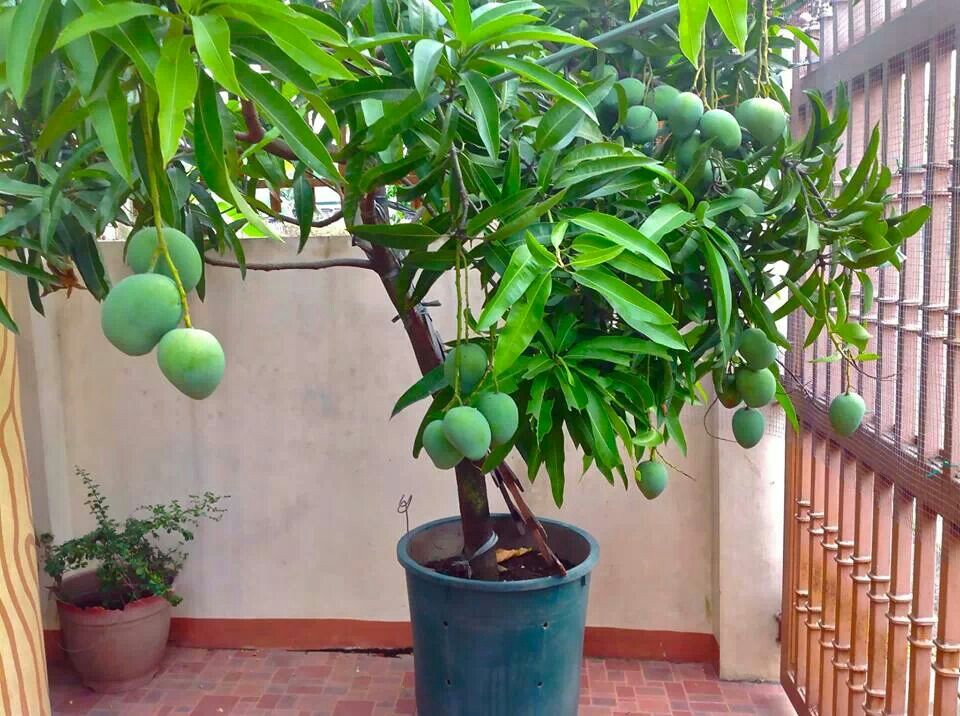
The flowering of mangoes is a delightful sight, but it should be remembered that only grafted individuals can bloom and bear fruit. Inoculate a plant grown from bone, you can independently by the method of budding. To do this, you need a kidney from a fruiting tree.
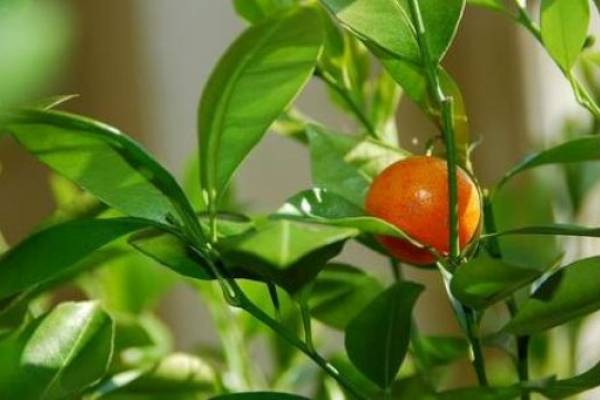 You may be interested in:
You may be interested in:It is recommended to carry out such a procedure according to the following scheme:
- with a sharp sterile knife, cut off a kidney with a piece of bark of a prolific tree;
- make an incision on the domestic plant in the shape of the letter T;
- gently bend the bark and plant the cut kidney there;
- fix the connection with a soft insulating tape until the kidney grows.
After this procedure, it is recommended to fertilize mangoes regularly using nitrogen-containing fertilizers. A plant grafted in this way blooms in about two years. After that, in three months the first crop will appear.
Common Fruit Growing Questions
Mango is not only a beautiful exotic plant that will decorate the interior of an apartment or house, but also an excellent fruit tree. Following certain rules, delicious healthy fruits can be grown at home.

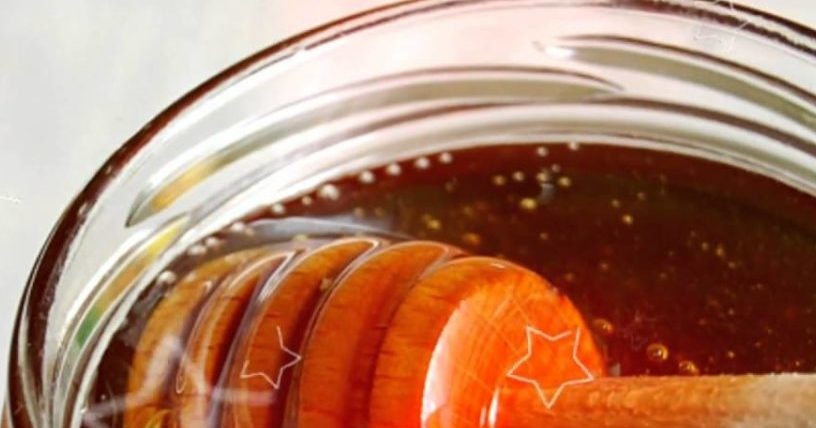
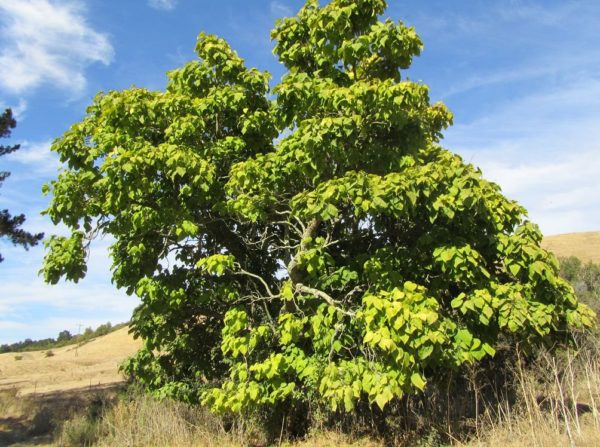
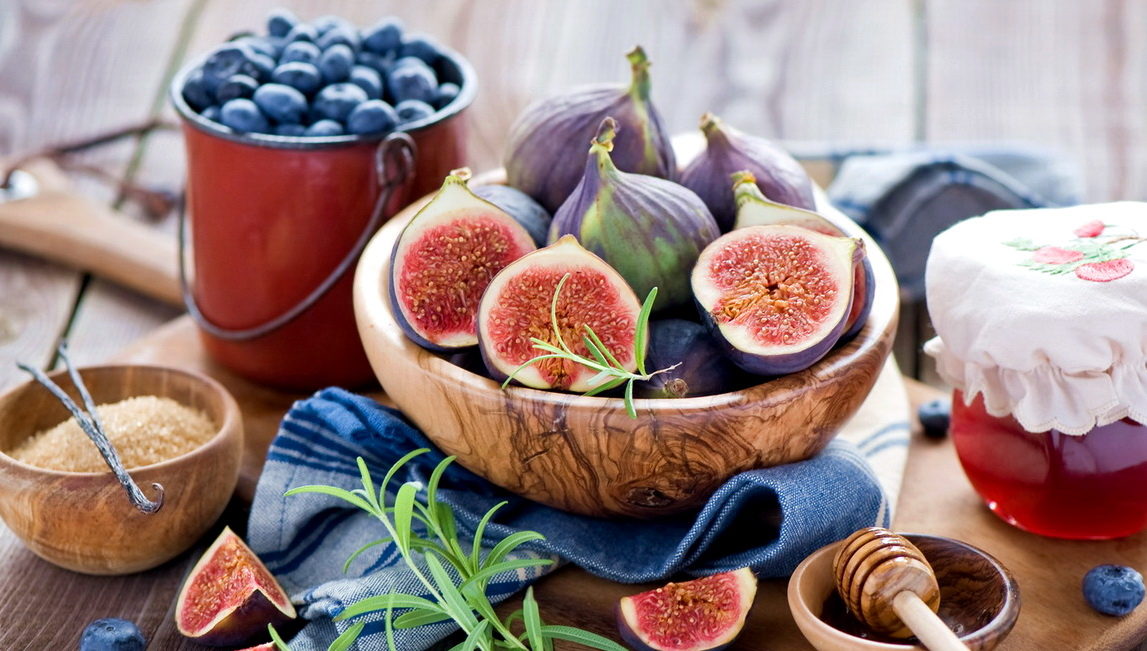
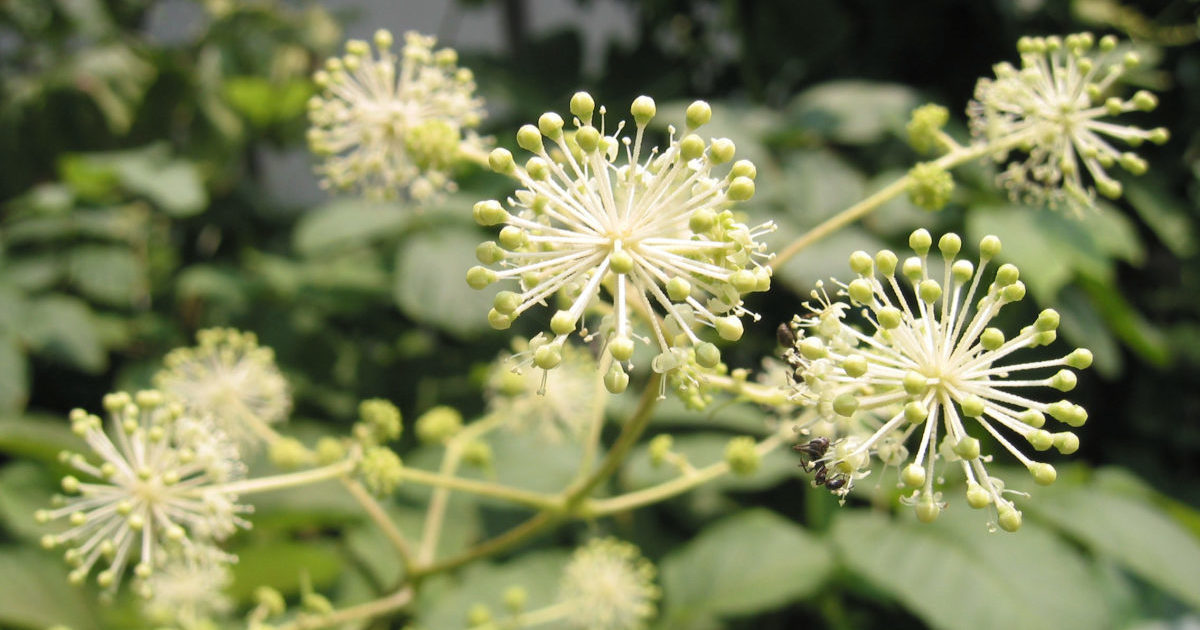 Aralia Manchurian - medicinal properties and contraindications, the use of tinctures in bodybuilding
Aralia Manchurian - medicinal properties and contraindications, the use of tinctures in bodybuilding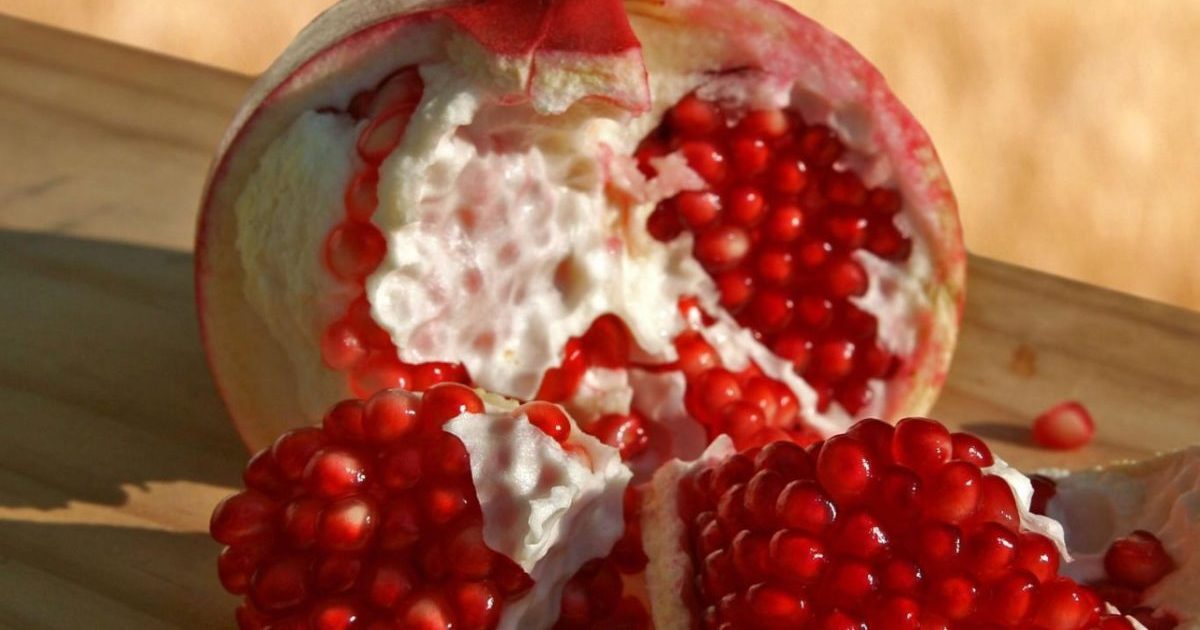 Seedless pomegranate - cutaway appearance, benefits and harms
Seedless pomegranate - cutaway appearance, benefits and harms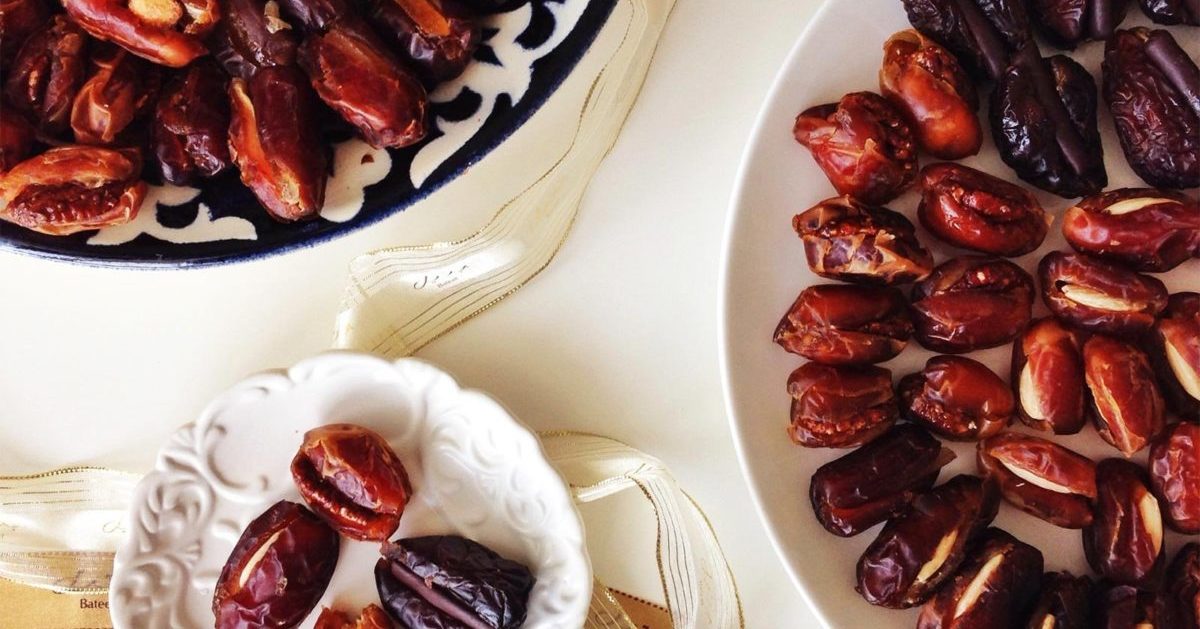 Dates - the benefits and harm to the body, how much you need to eat, properties and calorie content
Dates - the benefits and harm to the body, how much you need to eat, properties and calorie content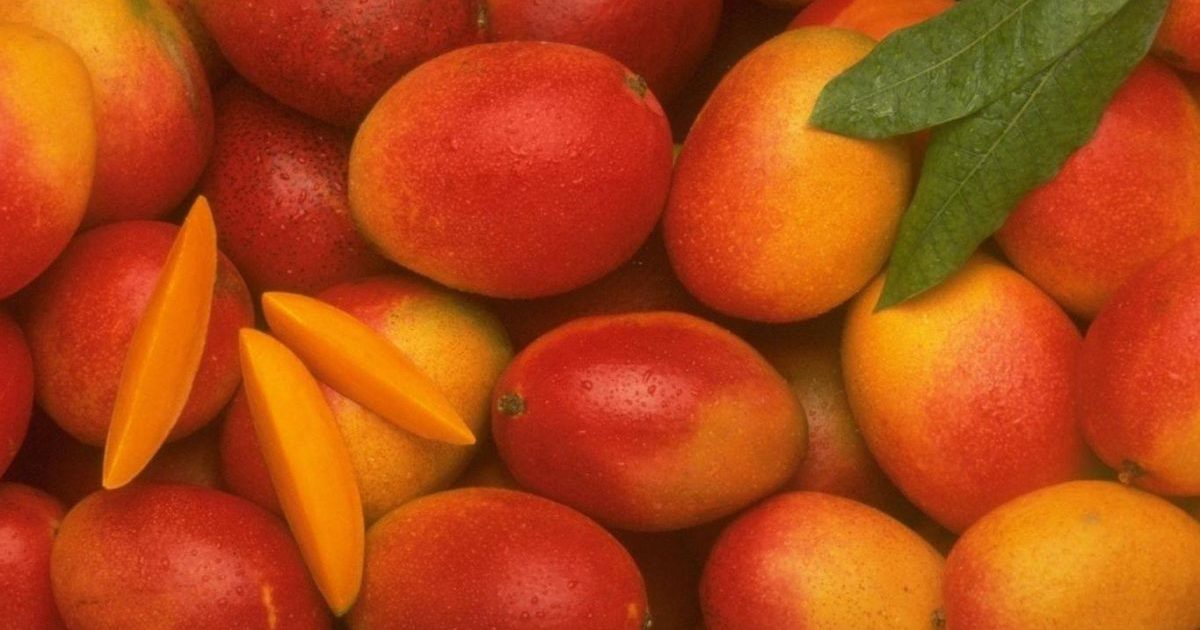 The benefits and harms of mango for the body of women and men - how to eat it?
The benefits and harms of mango for the body of women and men - how to eat it?